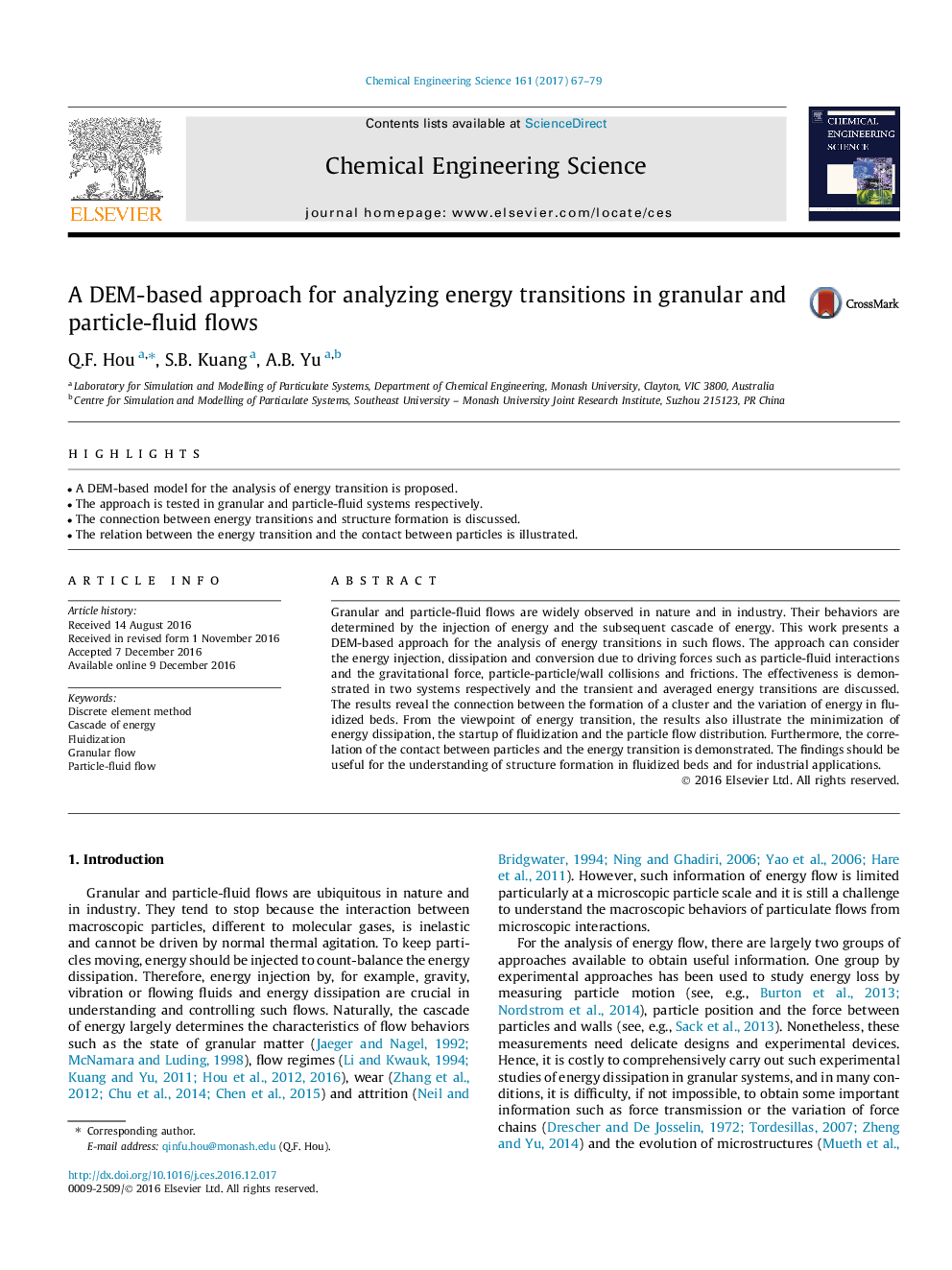| Article ID | Journal | Published Year | Pages | File Type |
|---|---|---|---|---|
| 6467503 | Chemical Engineering Science | 2017 | 13 Pages |
â¢A DEM-based model for the analysis of energy transition is proposed.â¢The approach is tested in granular and particle-fluid systems respectively.â¢The connection between energy transitions and structure formation is discussed.â¢The relation between the energy transition and the contact between particles is illustrated.
Granular and particle-fluid flows are widely observed in nature and in industry. Their behaviors are determined by the injection of energy and the subsequent cascade of energy. This work presents a DEM-based approach for the analysis of energy transitions in such flows. The approach can consider the energy injection, dissipation and conversion due to driving forces such as particle-fluid interactions and the gravitational force, particle-particle/wall collisions and frictions. The effectiveness is demonstrated in two systems respectively and the transient and averaged energy transitions are discussed. The results reveal the connection between the formation of a cluster and the variation of energy in fluidized beds. From the viewpoint of energy transition, the results also illustrate the minimization of energy dissipation, the startup of fluidization and the particle flow distribution. Furthermore, the correlation of the contact between particles and the energy transition is demonstrated. The findings should be useful for the understanding of structure formation in fluidized beds and for industrial applications.
